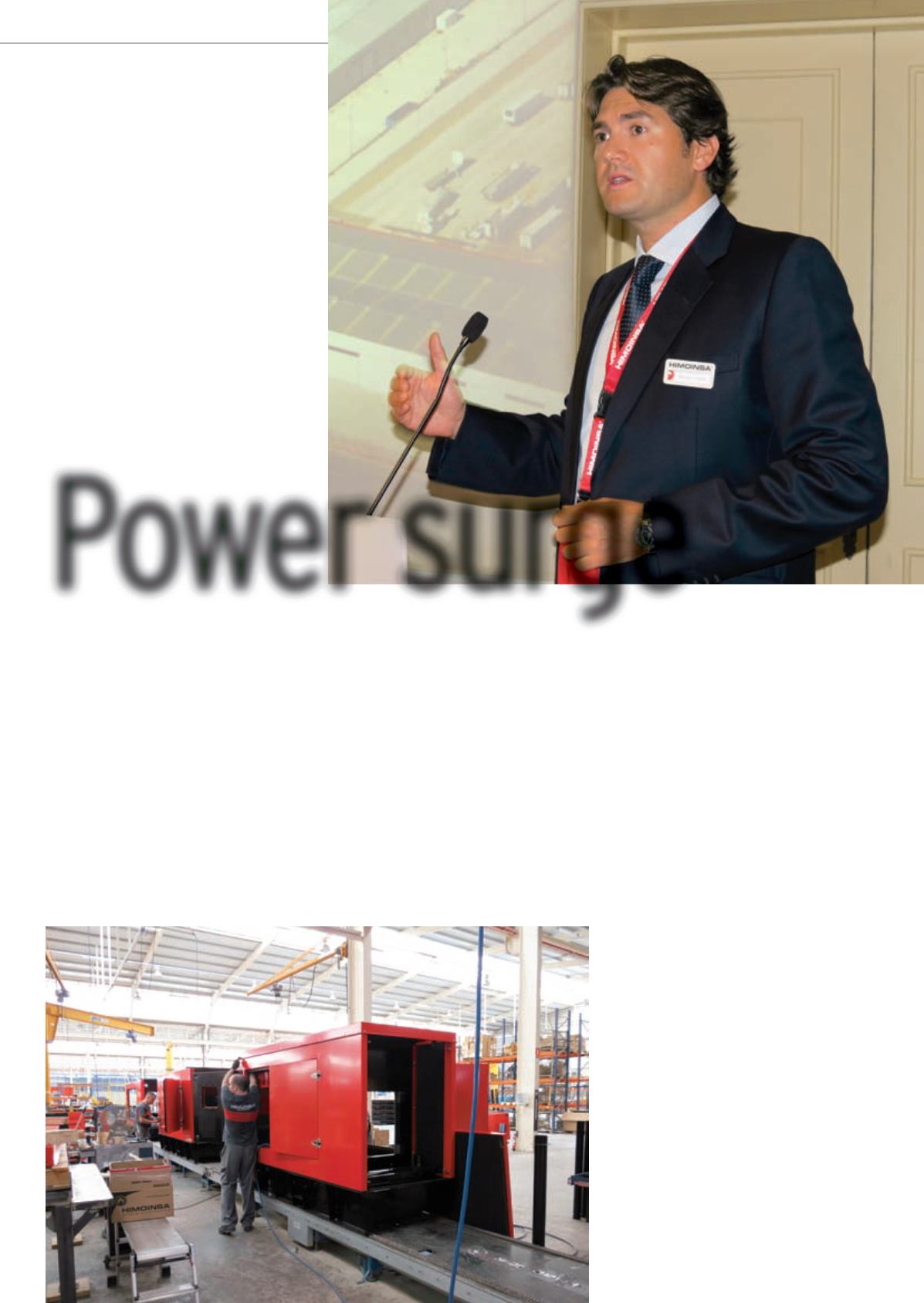
13
IRN NOVEMBER-DECEMBER 2013
HIMOINSA INTERVIEW
Already an international
business, Himoinsa continues
to invest in expanding
its production footprint
worldwide. Murray Pollok
visited the company at its
headquarters in Murcia, Spain
and spoke to Francisco J
Gracia, executive director.
its US$300 million business.
“The key is to be flexible to market needs – you
have to offer products the market wants in different
regions”, he says to
IRN
during Himoinsa’s Asia
Pacific dealer meeting in Spain in late September.
That has means enormous investments in
production facilities worldwide. In addition to
its three facilities in Spain and one in France (the
Genelec operation), Himoinsa has an alternator
facility in Argentina, an assembly plant in Kansas,
US, a factory in India and another in China. In the
latter, the full range of generators and lighting
towers is produced.
Mr Gracia says the company has invested more
than €50 million over the past five years; “The
philosophy is to reinvest profits every year,
constant reinvestment.” The strategy is paying off,
with revenues growing annually at an average rate
of 5 to 8%, which is lower than the 10-15% growth
rates it was experiencing before the crisis, but still
more than respectable.
Vertical manufacturing
The scale of investment also reflects Himoinsa’s
policy of vertical integration, whereby it makes
most of its own components – canopies, electronics,
alternators – although not engines. (It will also
source alternators from other suppliers like Mecc
Alte, when requested.)
Mr Gracia says this approach pays off in terms of
production flexibility: it is not reliant on third party
suppliers if it wants to increase production capacity
or change components. “Sometimes we wouldn’t
have been able to grow as fast as we have with our
own suppliers. In our factories we have machine
tools working only for Himoinsa.”
That policy, and the investment in production
facilities that it requires, will continue. Mr Gracia
says the next initiative is an assembly plant in
Belo Horizonte, Brazil, which will use canopies and
electrics imported from other Himoinsa facilities
and alternators from its plant in Argentina. Around
60% of the content will be local. It is a modestly
sized facility, around 3000 m2, and will produce
between 500 and 1000 units a year from 20 kVA up
to 700 kVA.
“The rental market is a key market, one of the
main targets globally, but also in Brazil. However, we
want to diversify beyond rental in Brazil”, he says,
“There are concerns about rental after the World
cup and Olympics. We need to balance rental with
H
imoinsa is fortunate in having far-sighted
owners. Francisco J Gracia, executive
director of the company and son of founding
chairman Francisco Gracia, recalls a conversation
with his father in which he talked about the need to
“balance the company”.
“He anticipated the situation we are facing in
Europe”, Mr Gracia tells
IRN
, “We need to focus on
the generator business, but diversify the market. We
can lose one market, but not all of them.”
In practical terms this meant investing in export
before it became a necessity or, worse, a matter of
survival. That strategy has meant that Himoinsa -
based in Murcia, southern Spain, and founded in
1982 – has turned itself from a company that in 2000
had an 85% reliance on Spain and Portugal into an
operation where Spain now represents 5% or less of
Power surge
Francisco J Gracia, executive
director of Himoinsa.
Himoinsa is a vertically integrated manufacturer.
It makes its own canopies, electronics and has an
alternator factory in Argentina.


